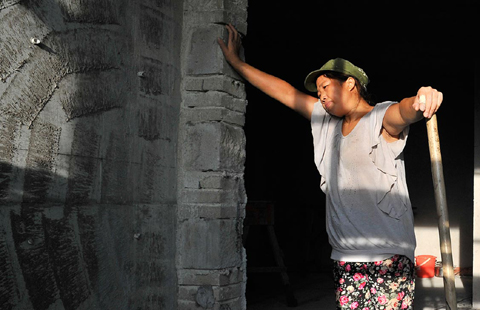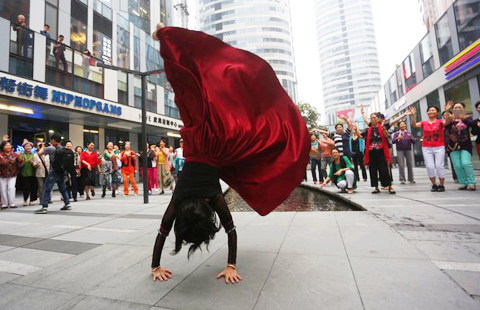Putting Chinese wines on the map
Updated: 2014-10-06 11:08
By Cui Jia in Beijing, Wang Huazhong in Ningxia, Zhao Ruixue in Shandong, Zhang Yu in Hebei and Cheng Hong in Shanxi(China Daily)
|
|||||||||||
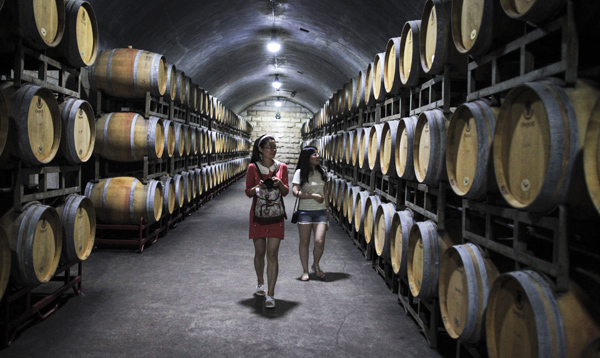 |
|
Tourists visit the wine storage room at the Changyu Wine Culture Museum in Yantai, Shandong province. The museum has attracted numerous visitors since it opened to the public in 1992. Zhu Xingxin / China Daily |
People in China drank more than 1.86 billion bottles of wine in 2013 - 1.36 times the amount consumed in 2008.
But most probably still know more about French wine regions such as Bordeaux than they do about domestic producers.
Now the owners of wineries across the country want to prove to customers at home and abroad that Chinese wine can be just as versatile and full of personality as top international brands.
They are confident that soon enthusiasts will want to order a bottle of cabernet sauvignon from the Xinjiang Uygur autonomous region to go with a steak, or a glass of chardonnay from the Ningxia Hui autonomous region to accompany fish.
China, which produced its first bottle of dry red wine in the 1980s, has established 10 wine production regions, each with its own character.
"Wine is like Chinese food, it has so many flavors and everyone can find the one for him or her," said Duan Changqing, director of the Research Center of Grape and Wine at Beijing's China Agricultural University.
Wine has been made in China since the explorer Zhang Qian traveled west in 138 BC. He returned with information about winemaking techniques, and also brought back people who possessed the necessary expertise.
Winemaking reached its peak during the Tang Dynasty (AD 618-907) as the country's economy boomed. Historical documents show that Li Shimin, a Tang emperor, greatly enjoyed wine.
Li expanded his territory to include what is now Xinjiang's Turpan area, which was famous for its grapes. He acquired details of a local method for making wine, which was later served at banquets.
"The wine industry often flourishes when a country's economy is relatively developed," Duan said. "China's past and present have proved this theory."
Most Chinese wines are sold domestically, but Duan believes they will eventually become a popular choice for customers in other countries, just like Chinese food.
"The characters of Chinese wines produced in different regions have become more stable, and the quality has been improving steadily."
The established large corporations have realized that, as Chinese customers acquire more knowledge, they tend to favor wines that have unique personalities rather than those that come from giant production plants.
Meanwhile, many small wineries that were built five or six years ago have started to produce fine wines, and their number has been growing.
"They hold the key to the future of China's wine industry," Duan added
Silver Heights, a winery in the Ningxia Hui autonomous region, comes highly recommended by international wine masters such as Jancis Robinson and Robert Parker.
Its founder, Gao Lin, built the concrete-walled cellar at Silver Heights' first vineyard himself.
It lacks modern ventilation or dehumidification equipment. But this is where Gao, along with his 37-year-old daughter, Emma Gao, a winemaker who graduated from Bordeaux University's Institute of Oenology, and his son-in-law, Thierry Courtade - also a winemaker at Bordeaux's Chateau Calon-Segur - have produced wine since 2007.
"People don't care about how good your cellar looks, they actually visit you to find how good your wines are," said Gao.
"We started like a 'garage cellar', small in plantation and production scale, but producing delicate and top-quality wines."
Silver Heights has thrived on that philosophy, building up its brand and winning international awards. Spanish distributor Torres China supplies its products to 82 luxurious hotels and five-star Aman resorts in China, alongside grands crus such as 1982 Chateau Lafite. Silver Heights now tends 40 hectares of vines.
Yet this success story is just one of many that the Helan Mountain East Valley, an ambitious wine region protected by State certification of origin, has to offer the world.
Situated at latitude 38 degrees north, the region's average elevation is 1,100 meters above sea level. It enjoys 3,000 hours of sunshine yearly and has low rainfall of about 600 mm during the growing season.
The Yellow River has washed through the Helanshan Mountain region for millions of years, bringing rich minerals and porous gray desert soil.
This favorable terroir - the French term for an area's special characteristics - produces good grapes that have low vulnerability to disease. The resulting wines have won more than 100 international prizes, and the region has been accepted as an observer by the International Organization of Vine and Wine.
Today's Top News
Barrage of deals expected on Europe trip
First US Ebola patient dies
Sino-Portuguese relations make 'giant leap' forward
Holiday spending habits change
Book of Chinese president debuts at Frankfurt fair
China's 'Nightingale' races for Oscar
Britain to deploy 750 servicemen in West Africa to tackle Ebola
Hopes high for Premier Li's visit to Germany
Hot Topics
Lunar probe , China growth forecasts, Emission rules get tougher, China seen through 'colored lens', International board,
Editor's Picks

|
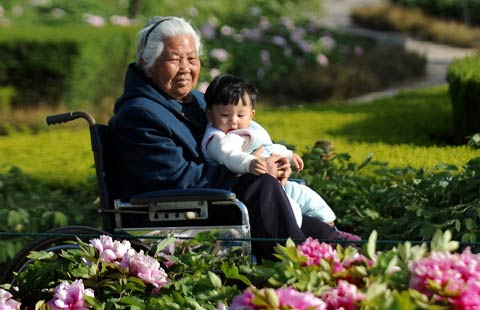
|

|
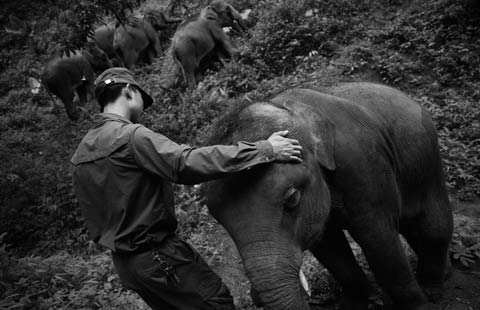
|

|
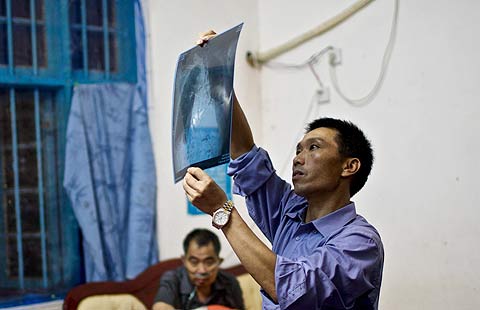
|


